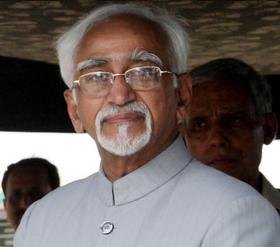Credit and Larger Version |
Imagine a world with unlimited access to scientific data in any field, where researchers can plot data from any source and visualize it any way they'd like, and where they can model results and explore ideas from a desktop, a lab or the field.
EarthCube aims to make that vision a reality.
EarthCube is a National Science Foundation (NSF) effort to create a data and knowledge management system for geosciences in the 21st century.
Its objective is to develop new ways of understanding and predicting the Earth system, from the sun to the center of the Earth.
To foster a dialog among geo-, bio- and cyberscientists to create an EarthCube framework, NSF has made 13 new awards totalling $14.5 million.
The effort is sponsored by NSF's Directorate for Geosciences along with its Directorate for Computer and Information Science and Engineering.
"Pushing the frontiers of the geosciences requires innovative ways to connect and share data and information," says Roger Wakimoto, NSF assistant director for Geosciences.
"As the internet revolutionized the way we lead our daily lives, scientists are searching for technologies that will advance the ability to discover, collaborate and conduct research at all levels.
"Through EarthCube, NSF has made investments in these technologies and the infrastructure that will be the foundation of addressing challenges in studying the Earth system."
Scientists who specialize in governance; data discovery, mining and access; workflows and other fields are participating.
We're in an era when access to information and data is often less a problem than the ability to efficiently process and use it, geoscientists say.
In some cases, the problem is caused by huge datasets that are difficult to store, transfer or analyze.
In other cases, the challenge is discovering and aggregating relevant data widely disseminated in many locations and formats, such as in the tables, text and figures of published papers, government agency reports, spreadsheets and websites.
A central EarthCube goal is establishing a computing system that can aid in finding, extracting and aggregating data, as well as in processing, summarizing and synthesizing those data in ways that help geoscientists better understand and model Earth systems.
Credit and Larger Version
EarthCube brings together geosciences, bioscientists and cyberscientists, engineers and educators.Credit and Larger Version
Imagine a world with easy access to unlimited scientific data: the goal of EarthCube.Credit and Larger Version
EarthCube: fostering connectivity among scientific disciplines in the geosciences and beyond.Credit and Larger Version
The new EarthCube awards are melding geosciences and cyberinfrastructure.Credit and Larger Version
2013 NSF EarthCube Awards:
Yolanda Gil, University of Southern California:
Kerstin Lehnert, Columbia University, Lamont Doherty Earth Observatory:
Matty Mookerjee, Sonoma State University:
Wonsuck Kim, University of Texas at Austin:
Tim Ahern, Integrated Research Institutions for Seismology:
Christopher Re, Stanford University:
David Maidment, University of Texas at Austin: EarthCube building blocks: Integrating discrete and continuous data
Siri-Johda Khalsa, University of Colorado:
Scott Peckham, University of Colorado:
Ilya Zaslasky, University of California, San Diego:
David Fulkner, Open Source Project for Network Data Access Protocols:
Thomas Narock, University of Maryland, Baltimore County:
Lee Allison, University of Arizona:
-NSF-
Media Contacts Cheryl Dybas, NSF (703) 292-7734 cdybas@nsf.gov
Related WebsitesNSF EarthCube Program:
http://www.nsf.gov/geo/earthcube/index.jsp
EarthCube: Data and Knowledge Environment for the Geosciences:
EarthCube: Data and Knowledge Environment for the Geosciences:
The National Science Foundation (NSF) is an independent federal agency that supports fundamental research and education across all fields of science and engineering. In fiscal year (FY) 2012, its budget was $7.0 billion. NSF funds reach all 50 states through grants to nearly 2,000 colleges, universities and other institutions. Each year, NSF receives about 50,000 competitive requests for funding, and makes about 11,500 new funding awards. NSF also awards about $593 million in professional and service contracts yearly.
Useful NSF Web Sites:
NSF Home Page:
NSF Home Page:
http://www.nsf.gov
NSF News:
NSF News:
http://www.nsf.gov/news/
For the News Media:
For the News Media:
http://www.nsf.gov/news/newsroom.jsp
Science and Engineering Statistics:
Science and Engineering Statistics:
http://www.nsf.gov/statistics/
Awards Searches:
Awards Searches:
The National Science Foundation (NSF
Guillermo Gonzalo Sánchez Achutegui






